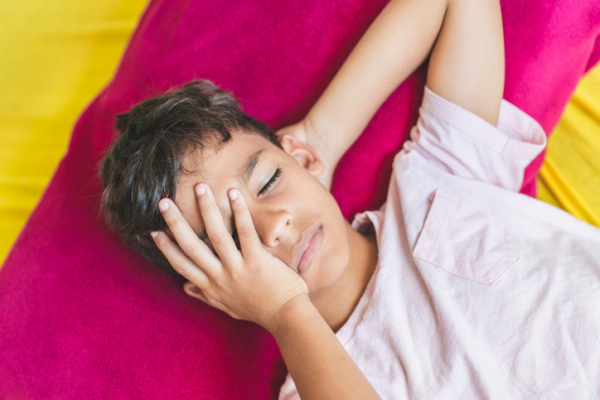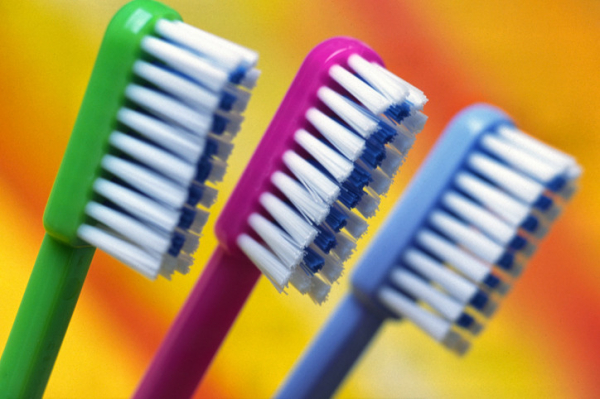Do children get migraine headaches? What parents need to know


Headaches are very common in children and teens. In fact, more than half will suffer from headaches at some point, and by 18 years the majority of adolescents have had them. And while most headaches are part of a viral illness, some are migraines. In fact, recurring migraines affect as many as one in 10 children and teens overall.
What should you know — and do — if you think your child or teen may be having migraines?
How early do migraines start to occur?
We don’t tend to think about migraines in children, but by age 10, one in 20 children has had a migraine. And migraines sometimes occur even earlier.
Before puberty, boys and girls are equally likely to have them. After puberty, migraines are more common in girls.
Which migraine symptoms are most common in children?
Migraines are often one-sided in adults. In children they are more likely to be felt on both sides of the head, either in both temples or both sides of the forehead.
While it’s not always easy to tell a migraine from another kind of headache, children
- often report throbbing pain
- may experience nausea and sensitivity to light and noise.
The flashing lights and other vision changes people often see as a migraine begins are less common in children. However, parents may notice that their child is more tired, irritable, or pale before a migraine begins — and takes a while to get back to normal after it ends.
What causes migraines in children?
We don’t know exactly what causes migraines. We used to think it had to do with blood flow to the brain, but that does not seem to be the case. It appears that migraines are caused by the nerves being more sensitive, and more reactive to stimulation. That stimulation could be stress, fatigue, hunger, almost anything.
Migraines run in families. In fact, most migraine sufferers have someone in the family who gets migraines too.
Can migraines be prevented?
The best way to prevent migraines is to identify and avoid triggers. The triggers are different in each person, which is why it’s a good idea to keep a headache diary.
When your child gets a headache, write down what was happening before the headache, how badly it hurt and where, what helped, and anything else about it you can think of. This helps you and your doctor see patterns that can help you understand your child’s particular triggers.
It’s a good idea to make sure your child gets enough sleep, eats regularly and healthfully, drinks water regularly, gets exercise, and manages stress. Doing this not only helps prevent migraines, but is also good for overall health!
How can you help your child ease a migraine?
When a migraine strikes, sometimes just lying down in a dark, quiet room with a cool cloth on the forehead is enough. If it’s not, ibuprofen or acetaminophen can be helpful; your doctor can tell you the best dose for your child.
It’s important not to give your child these medications more than about 14 days a month, as giving them more often can lead to rebound headaches and make everything worse!
Are there prescription medicines that can help children with migraines?
If those approaches aren’t enough, a class of medications called triptans can be helpful in stopping migraines in children ages 6 and up.
If a child experiences frequent or severe migraines, leading to missed days of school or otherwise interfering with life, doctors often use medications to prevent migraines. There are a number of different kinds, and your doctor can advise you on what would be best for your child.
Some girls get migraines around the time of their period. If that happens frequently, sometimes taking a prevention medicine around the time of menses each month can be helpful.
When to contact your doctor
If you think your child might be having migraines, you should call and make an appointment. Bring the headache diary with you. Your doctor will ask a bunch of questions, do a physical examination, and make a diagnosis. Together you can come up with the best plan for your child.
You should always call your doctor, or go to an emergency room, if your child has a severe headache, a stiff neck, trouble with coordination or movement, is abnormally sleepy, or isn’t talking or behaving normally.
The American Academy of Pediatrics has additional useful information about migraines, and how to treat and prevent them, on their website.
About the Author

Claire McCarthy, MD, Senior Faculty Editor, Harvard Health Publishing
Claire McCarthy, MD, is a primary care pediatrician at Boston Children’s Hospital, and an assistant professor of pediatrics at Harvard Medical School. In addition to being a senior faculty editor for Harvard Health Publishing, Dr. McCarthy … See Full Bio View all posts by Claire McCarthy, MD




 Each year, more than 4.5 million dog bites occur in the United States. Despite what you might assume, most of these incidents don’t happen when an unfamiliar dog attacks someone in a park or another outdoor location. Instead, most dog bites are inflicted by a pet dog in a home.
Each year, more than 4.5 million dog bites occur in the United States. Despite what you might assume, most of these incidents don’t happen when an unfamiliar dog attacks someone in a park or another outdoor location. Instead, most dog bites are inflicted by a pet dog in a home.
















